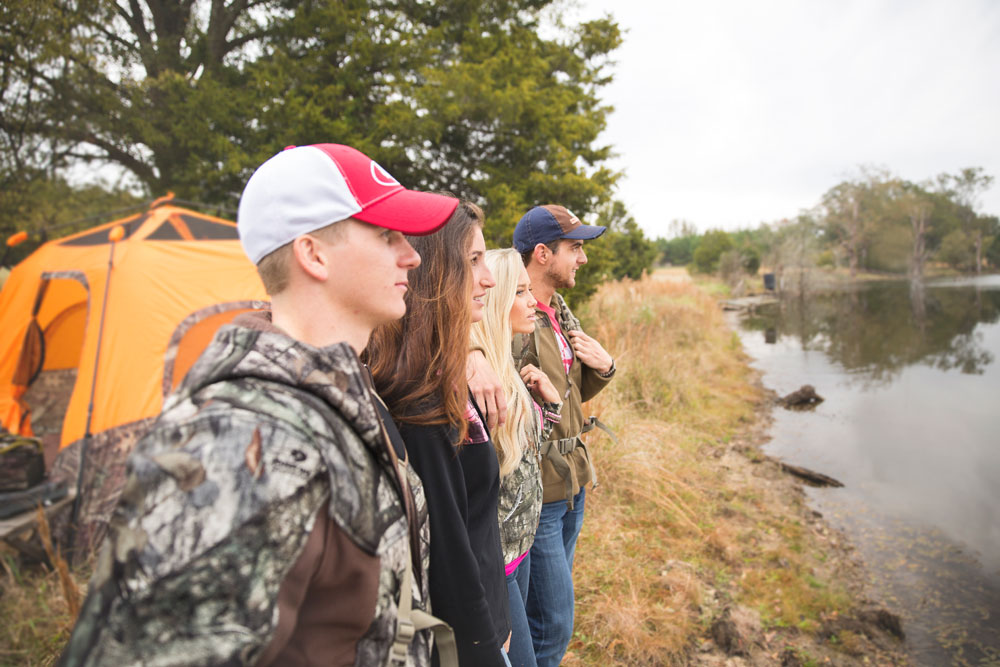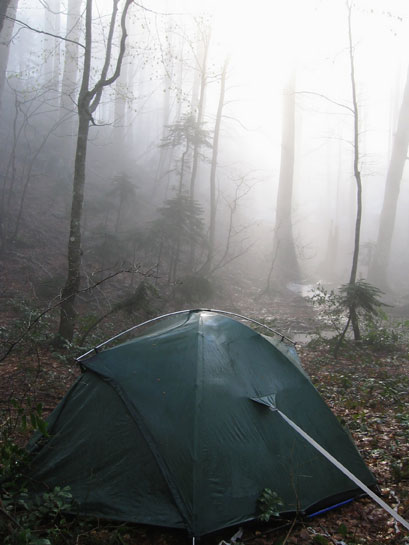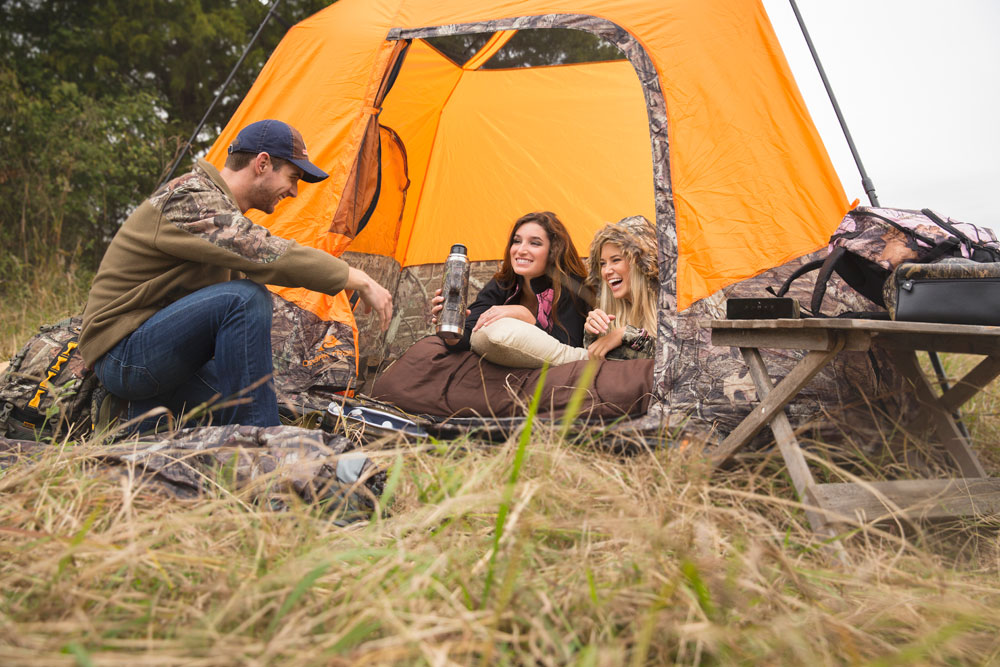Even if you buy the most durable tent available, accidents happen, causing rips and holes. Whether you get caught in a windstorm, your dog gets a hold of it or you use it for years, tents eventually succumb to wear and tear.
However, not every hole means you need to go out and buy a new tent. Knowing when you can patch up a hole and when to throw the tent away could save you hundreds of dollars. Having a tent repair kit on you when camping means you don’t need to cut your family vacation short just because of a tear.
Repairing a hole or sealing a tear isn’t difficult to do and doesn’t require many tools. This handy guide could save your camping trip in case of an unexpected hole.

How to Patch a Hole
If you catch a bit of your tent on a sharp branch, you may notice a small hole in the bottom or sides. To repair it, you only need four items:
- A bit of cloth or rag
- Rubbing alcohol
- Tent repair tape (Tenacious Tent Tape or plain duct tape both work well)
- Scissors
If you need to repair the mesh in your tent, you’ll need to use a mesh repair kit too.
Repairing a small hole is relatively simple. First, lay the tent flat on the ground. Measure the hole and cut a round piece of repair tape one inch wider in diameter than the hole. Then, clean the area around the hole with the rubbing alcohol or cleaning wipes. Use your rag to ensure the area is dry, and then place your prepared repair tape over the hole, pressing down for approximately 30 seconds to help it stick.
Although you can put your tent back up for the night, wait a day before packing it away.
If the hole is in a taut area, such as near a pole, apply a patch of repair tape to the inside of the tent, as well, for added support.
For holes in mesh, lay the torn area flat on the ground and, after cleaning and drying, place your mesh repair sticker directly over the torn area. Press down and let the tent sit for at least a day before packing away. It’s harder to do this when you’re outside, so wait until you get home from your trip to repair a mesh tear.
Even if you’re an avid minimalist camping enthusiast, it’s best to bring along a few disinfectant wipes and a small amount of repair tape to keep your tent dry and insect-free for your entire trip. Besides, having disinfectant can come in handy, and duct tape is useful in many situations, whether to remove a splinter or patch up a hole in your water bottle.
How to Seal a Leak
 Most tents have a sealant on their seams, which prevents water from dripping inside. However, those seals sometimes fail or wear out, depending on the tent’s quality, resulting in a leaky tent and wet, unhappy campers.
Most tents have a sealant on their seams, which prevents water from dripping inside. However, those seals sometimes fail or wear out, depending on the tent’s quality, resulting in a leaky tent and wet, unhappy campers.
While you might struggle to fix a leak on the trail, you can do some repairs once you’re home to make your tent as good as new.
You only need three items to repair your leaky seams:
- Seam sealer
- Rubbing alcohol (or disinfectant wipes)
- A clean cloth or rag
Before purchasing your seam sealer, check to see what coating is on your tent. Most tents either have a silicone-treatment or a polyurethane-treatment, and each requires a specific type of seam sealer. If you’re unsure what type of treatment your tent has, look up your tent online or call the store where you bought it to ask.
Once you have your tools, set up your tent in a sunny area. You may need to wait until the weather clears or set it up indoors with the fly on inside-out. Examine your seams to see if any seam tape is peeling, and gently remove the flaky sections while leaving the intact tape in place.
Next, clean the areas with missing seam tape with your rubbing alcohol, and wipe them dry with your cloth. Put your seam sealer on the seam gently, running it along the whole of the seam. If large sections of a seam are broken, apply the sealer to all the seams on your tent to protect them from leaking in the future.
Once applied, leave your tent set up to dry for at least a day.
When to Buy a New Tent
If the hole is a long rip along the seams, you may need to bring your tent in for professional repair. Depending on your tent’s age and the cost of repairs, it might be more cost-effective to purchase a new one.
Even if the hole is relatively small, you might wonder how to upgrade your tent. If you bought an inexpensive starter tent but found yourself hitting the trails every weekend, it’s a good idea to spring for a better model or upgrade to a pop-up tent or RV.
If you spend more time repairing your tent than camping, or you notice severe fading or fraying along the seams, grommets, air vents or ground sheet, it may be time to invest in a newer, more advanced tent.
Preventing Tent Damage
Although repairing a small hole or your tent seams isn’t tricky, it’s no fun to discover a hole or a leak on the first night of a week-long camping trip. Following a few easy maintenance tips can help keep your tent in working order for longer and reduce surprise damages.
The best way to protect your tent is by ensuring you store it correctly. Before packing it away, make sure it’s completely dry. If you pack up camp during a rainstorm, lay your tent out flat in your house before storing it in the closet or garage. Storing it wet could hasten the breakdown of protective coatings and could cause mold growth.
Another way to protect your tent is by investing in a footprint or dropcloth that keeps the bottom of your tent dryer even in wet conditions. It can also protect against tears from hidden rocks or broken branches and pine cones on the ground.
Last, be gentle with your tent. Tent poles and zippers can break with rough use, so use caution when setting up and taking down your poles. When opening your tent doors, use both hands to prevent a broken zipper.

Stock Up on Warm Camping Gear
Whether you are patching up a ripped seam or venturing out in your upgraded tent, wearing the right gear for your trip means you can stay comfortable and focus on having fun. At Mossy Oak, we have a wide range of apparel for hunters, anglers and hikers of all ages. Whether you need a warm hat for the winter or some waterproof boots for your toddler, you can find it in our online shop.
Mossy Oak Wellness products are designed with that singular goal - to help you get the most from your time outdoors. Our passion for helping people get closer to nature has led us to develop innovative, new products built to not only motivate and inspire you to pursue your best life outdoors but to help you feel better while you’re out there.




























